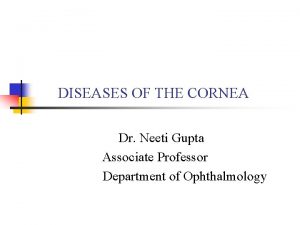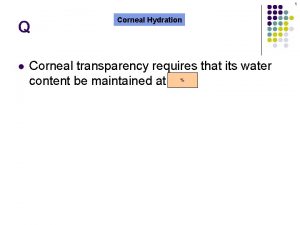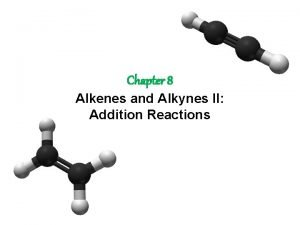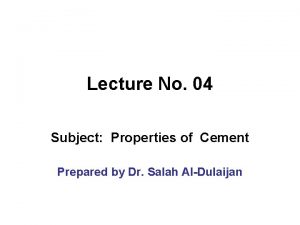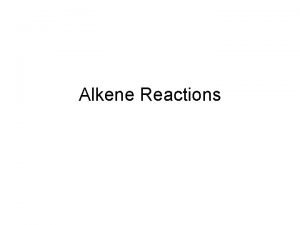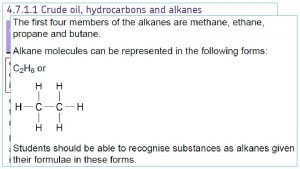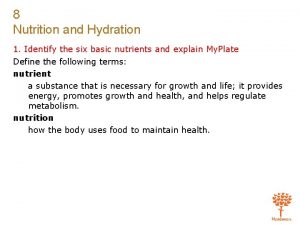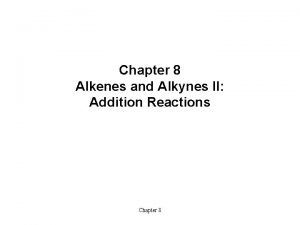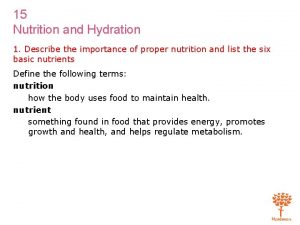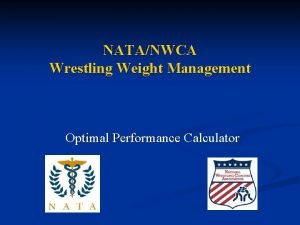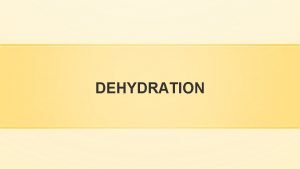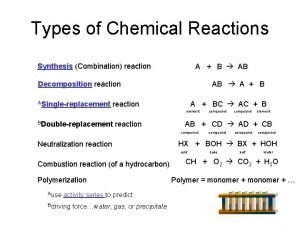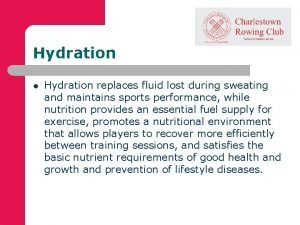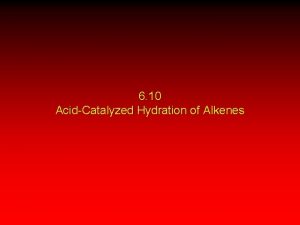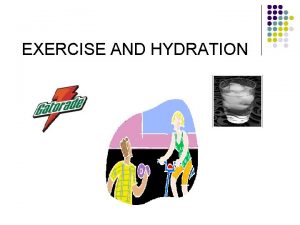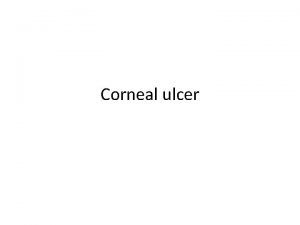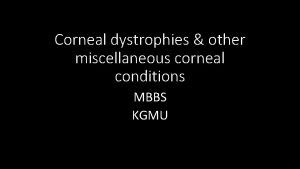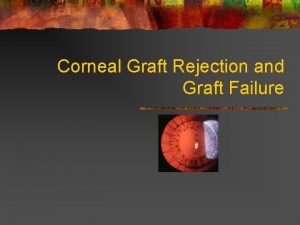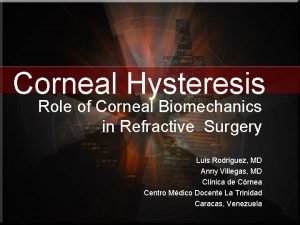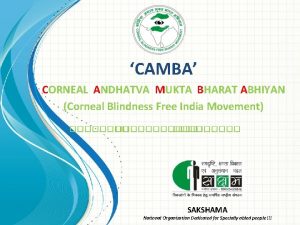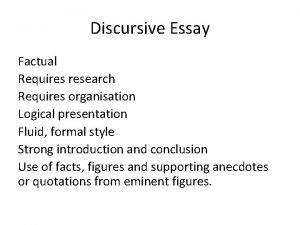1 Q l Corneal Hydration Corneal transparency requires














- Slides: 14

1 Q l Corneal Hydration Corneal transparency requires that its water content be maintained at 78% The corneal water content becomes progressively greater from anterior to posterior Intraocular pressure works to dessicate the cornea, while corneal GAGs work to hydrate it The difference between IOP and the effect of corneal GAGs is called the imbibition pressure of the corneal stroma % l l l

2 A l l Corneal Hydration Corneal transparency requires that its water content be maintained at 78% The corneal water content becomes progressively greater from anterior to posterior Intraocular pressure works to dessicate the cornea, while corneal GAGs work to hydrate it The difference between IOP and the effect of corneal GAGs is called the imbibition pressure of the corneal stroma

3 Q l l Corneal Hydration Corneal transparency requires that its water content be maintained at 78% The corneal water content becomes progressively greater from anterior to posterior Intraocular pressure works to dessicate the cornea, while corneal GAGs work to hydrate it The difference between IOP and the effect of corneal GAGs is called the imbibition pressure of the corneal stroma anterior to posterior vs posterior to anterior l l

4 A l l Corneal Hydration Corneal transparency requires that its water content be maintained at 78% The corneal water content becomes progressively greater from anterior to posterior Intraocular pressure works to dessicate the cornea, while corneal GAGs work to hydrate it The difference between IOP and the effect of corneal GAGs is called the imbibition pressure of the corneal stroma

5 Q l l l Corneal Hydration Corneal transparency requires that its water content be maintained at 78% The corneal water content becomes progressively greater from anterior to posterior Intraocular pressure works to dessicate the cornea, while corneal GAGs work to hydrate it The difference between IOP and the effect of corneal GAGs is called the imbibition pressure of the corneal stroma hydrate vs dessicate l

6 A l l Corneal Hydration Corneal transparency requires that its water content be maintained at 78% The corneal water content becomes progressively greater from anterior to posterior Intraocular pressure works to dessicate the cornea, while corneal GAGs work to hydrate it The difference between IOP and the effect of corneal GAGs is called the imbibition pressure of the corneal stroma

7 Q l l Corneal Hydration Corneal transparency requires that its water content be maintained at 78% The corneal water content becomes progressively greater from anterior to posterior Intraocular pressure works to dessicate the cornea, while corneal GAGs work to hydrate it The difference between IOP and the effect of What are GAGs? Glycosaminoglycans—important components of the corneal stroma corneal GAGs is called the imbibition pressure How do GAGs promote corneal hydration? of the corneal stroma GAGs are negatively charged and thus repel each other. In repelling each other, they expand the stromal space, thereby producing a swelling pressure.

8 A l l Corneal Hydration Corneal transparency requires that its water content be maintained at 78% The corneal water content becomes progressively greater from anterior to posterior Intraocular pressure works to dessicate the cornea, while corneal GAGs work to hydrate it The difference between IOP and the effect of What are GAGs? Glycosaminoglycans—important components of the corneal stroma corneal GAGs is called the imbibition pressure How do GAGs promote corneal hydration? of the corneal stroma GAGs are negatively charged and thus repel each other. In repelling each other, they expand the stromal space, thereby producing a swelling pressure.

9 Q l l Corneal Hydration Corneal transparency requires that its water content be maintained at 78% The corneal water content becomes progressively greater from anterior to posterior Intraocular pressure works to dessicate the cornea, while corneal GAGs work to hydrate it The difference between IOP and the effect of What are GAGs? Glycosaminoglycans—important components of the corneal stroma corneal GAGs is called the imbibition pressure How do GAGs promote corneal hydration? of the corneal stroma GAGs are negatively charged and thus repel each other. In repelling each other, they expand the stromal space, thereby producing a swelling pressure.

10 A l l Corneal Hydration Corneal transparency requires that its water content be maintained at 78% The corneal water content becomes progressively greater from anterior to posterior Intraocular pressure works to dessicate the cornea, while corneal GAGs work to hydrate it The difference between IOP and the effect of What are GAGs? Glycosaminoglycans—important components of the corneal stroma corneal GAGs is called the imbibition pressure How do GAGs promote corneal hydration? of the corneal stroma GAGs are negatively charged and thus repel each other. In repelling each other, they expand the intrastromal space, thereby producing a swelling pressure.

11 Q Corneal Hydration Corneal transparency requires that its water content be maintained at 78% l The corneal water content becomes progressively greater from anterior to posterior l Intraocular pressure works to dessicate the cornea, while corneal GAGs work to hydrate it l The difference between IOP and the effect of Huh? I thought IOP forced water into the cornea. How does it have a dessicating effect? By pushing against the cornea, IOP effect ‘wringsthe out the sponge, ’ promoting dessication. corneal GAGs isin called imbibition pressure An intact endothelium-Descemet’s effectively prevents aqueous ingress, unless IOP is so high of thethecorneal stroma as to overwhelm endothelial pump function. l

12 A Corneal Hydration Corneal transparency requires that its water content be maintained at 78% l The corneal water content becomes progressively greater from anterior to posterior l Intraocular pressure works to dessicate the cornea, while corneal GAGs work to hydrate it l The difference between IOP and the effect of Huh? I thought IOP forced water into the cornea. How does it have a dessicating effect? By pushing against the cornea, IOP effect ‘wringsthe out the sponge, ’ promoting dessication. corneal GAGs isin called imbibition pressure An intact endothelium-Descemet’s effectively prevents aqueous ingress, unless IOP is so high of thethecorneal stroma as to overwhelm endothelial pump function. l

13 Q l l Corneal Hydration Corneal transparency requires that its water content be maintained at 78% The corneal water content becomes progressively greater from anterior to posterior Intraocular pressure works to dessicate the cornea, while corneal GAGs work to hydrate it The difference between IOP and the effect of corneal GAGs is called the imbibition pressure of the corneal stroma two words

14 A l l Corneal Hydration Corneal transparency requires that its water content be maintained at 78% The corneal water content becomes progressively greater from anterior to posterior Intraocular pressure works to dessicate the cornea, while corneal GAGs work to hydrate it The difference between IOP and the effect of corneal GAGs is called the imbibition pressure of the corneal stroma
 Corneal transparency maintained by
Corneal transparency maintained by Corneal transparency
Corneal transparency Oxidation geography
Oxidation geography Hydration shells
Hydration shells Oxymercuration demercuration reagents
Oxymercuration demercuration reagents Heat of hydration
Heat of hydration Is acid catalyzed hydration syn or anti
Is acid catalyzed hydration syn or anti Is alcohol
Is alcohol Chapter 8 nutrition and hydration
Chapter 8 nutrition and hydration Syn addition
Syn addition Pros and cons of artificial nutrition and hydration
Pros and cons of artificial nutrition and hydration How can an na best help residents with eating?
How can an na best help residents with eating? Wrestling weight calculator
Wrestling weight calculator Hydration level chart
Hydration level chart Combination chemistry
Combination chemistry
